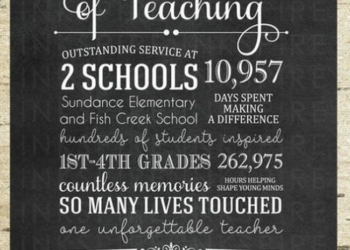5 Practical Tips You Can Take On Board Today
Whatever the size of your business, whether it’s large or small, there are 5 key steps you need to take for your learning to be effective:
- Review your current situation
- Set your goals
- Do your research
- Choose your tactics and channels
- Monitor and evaluate your results
The key, of course, is investing time in planning, researching, and testing your activity every step of the way.
Behavior change is a huge topic in and of itself. In The Behavioural Science of Serious Games, I touched on the laws of learning, the theory behind why immersive learning solutions such as serious games and Virtual Reality connect with us so powerfully. But how do you start to apply these theories to Learning and Development activities and programs? Presented below are 5 practical tips to consider when designing any intervention in your organization.
1. Be Mindful Of Your Audience
Take some time to really understand your audience. It should go without saying that you are not designing for yourself but for others. To make something that truly appeals you need to step into the shoes of the users of your program.
Increasingly age is just a number, and our willingness to get involved is more down to the mindset we adopt as individuals. So when thinking about your audience rather than thinking about your employees in terms of standard demographic criteria, think about the company culture. Is it flexible, formal, casual, or fun? Are sharing and risk-taking encouraged or is it more conservative? Also think about what has been done before, what has worked well, what have people enjoyed or disliked—this is often very eye-opening and will uncover hidden cultural associations. These cultural indicators will help structure the “mechanics” you can use for your change program.
2. Place People At The Center Of The Experience
When we think about change we often look to model someone we admire. Therefore presenting inspiring real-life examples of peers can be a fantastic motivator. This gives everyone a target to aim for but also presents a different point of view, creating dissonance between where employees are now and where they need to get to.
Give the users of your change program control over how they “play” with it. Within our products, we place a user in a setting and essentially ask “how do you want to proceed?” By making their own choices, they are building accountability for their decisions and can directly see the consequences. This process deepens learning and strengthens emotional connections between consequence and choice. These approaches increase intrinsic motivation (the internal drive to complete actions because you enjoy them, rather than for an external reward), which is a long-term requirement for any behavior change.
3. Use Pacing To Avoid Cognitive Overload And Data Dump
Think of the mind rather like an iceberg, not in terms of a lump of frozen water (that would be taking brain freeze too far!), but as a glimpse of a complex and mostly unseen structure—part floating above the water (the conscious) but the greater mass lurking under the surface (the unconscious). This is how our minds function. We are only aware of the smallest proportion of what goes on inside our own heads; we never see or feel the majority of the processing that goes on. However, because we are not consciously aware of all the hard graft going on inside our heads, it doesn’t mean we can’t design to deliver information in the most optimal ways for our brains to take in.
Data dump is a term used to describe poor design of information transfer—think of the quick spiel you hear at the end of a radio advert running through the terms and conditions. You don’t really get the chance to think about the content you are hearing, you are being bombarded with data that is overloading your memory. Unfortunately, this is how a lot of learning is also structured.
This is where pacing comes in. Pacing is the breaking up of information into small bite-sized chunks that are easy for our memories to digest and cope with. Once we have dealt with one chunk, we can move on to the next. It’s based on the constructive learning principle of scaffolding. To give you a practical example of this happening in everyday life, think about how you remember a phone number. It’s usually in three- or four-digit chunks, right? Each “chunk” triggers the memory of the next digits in the sequence, and so on. The more we use the number, the more the association between the chunks strengthens over time.
This is exactly how it works for other pieces of information we recall. We remember an event, which triggers another memory—an emotion, a feeling—and before you know it a sequence of memories fly through your mind. Good pacing allows you to build up a bigger picture by introducing small principles over time, creating deeper learning which is more likely to lead to behavior change.
4. Make It Sticky
Reinforcing key messages is critical for any behavior change. Hearing something just once is not likely to make an impact. We want to build a habit, and for a habit to form we know we need to reinforce the message. Make your message visible and central to everyday life. Whether that means posters in the office, daily challenges or alerts, or new content released over time, keep the information flowing.
There is a myth out there in the world of pop psychology that it takes 21 days to form a new habit. Well, in reality, it takes anywhere from 2–8 months (Lally, van Jaarsveld, Potts and Wardle, 2009). So forming a habit is really hard work, but whether it takes 10 or 1000 days, it doesn’t matter. What’s important is that you start at day one and keep going!
I’d like to share a concrete example of a strategy we have used before to make learning sticky. After users had completed a course we designed to address diversity and inclusion, they would be assigned a persona that their in-game behavior most closely correlated to. This persona was then used to name their sports teams for the company sports day. They printed t-shirts. They even made stress toys and posters so the personas were clearly visible when walking by a colleague’s desk. Firstly, you could see they had taken the course, and secondly, you could immediately know something about that person, whether you knew them personally or not. These were great conversation starters and reminders about the program!
5. Innovate Your Delivery Mechanism And Engage Your Audience
True innovation comes from the coming together of different disciplines and unique lines of thought. You could have the greatest message of all time, but if no one is listening, your message is worthless. Therefore make sure you are shouting where your learners are listening and really engage them with the message. Be innovative in how you deliver your message.
Think outside the box and consider how you can use mobile, viral marketing, serious games, treasure hunts, or team challenges to get people involved and on board with your message. Perhaps you want to release teaser videos of your latest product? Apple is excellent at this, sometimes releasing just dates that are rumored to relate to the next iPhone, and some would suggest leaking their own schematics so the media and bloggers begin to report the story before it’s even broken.
In the games world, viral marketing campaigns are growing in popularity. My all-time favorite is “I Love Bees” designed for the launch of Halo 2. Hidden messages were included in trailers which led “players” to specific websites containing further information. Together hundreds of thousands of people joined forces to break the code and uncover the meaning hidden within these sources. As each puzzle was solved, more and more game backstory was released.
Of course, the marketing budget behind Halo 2, as well as the effort to set up the campaign, was immense, but we can learn a lot from the principles they adopted. The delivery mechanism was fun, it appealed to the users, it used various forms of web and media to deliver content in different ways increasing appeal and access. And most importantly once it was set free, it snow-balled. People got excited about it; even those who don’t play Halo 2 (myself included) can appreciate the beauty of such a system.
References:
- Lally, P., C. H. M. van Jaarsveld, H. W. W. Potts, and Jane Wardle. 2009. “How are habits formed: Modelling habit formation in the real world.” European Journal of Social Psychology 40: 998–1009.

Totem Learning
DO YOU WANT TO ENGAGE, ENABLE, EMPOWER LEARNERS TO BE THEIR BEST? Partner with us to drive higher engagement, deeper learning and better retention of information through premium digital experiences using gamification, virtual and augmented reality.















